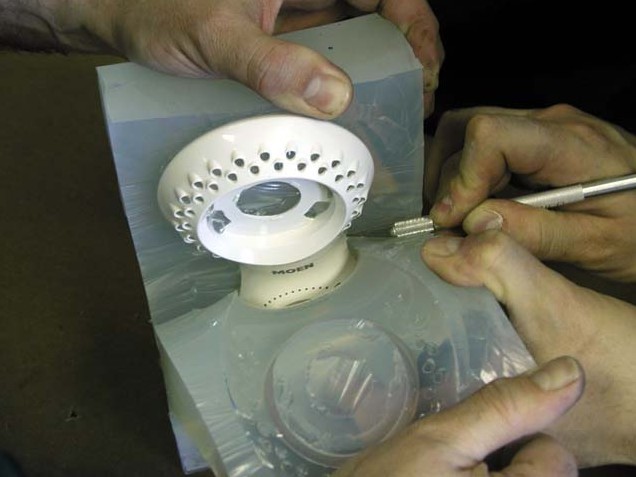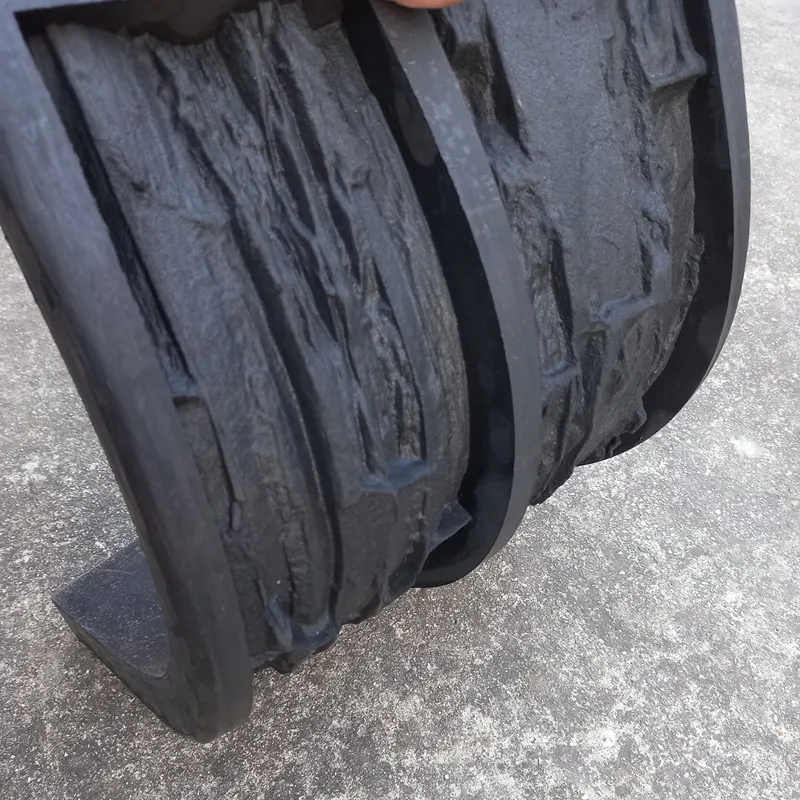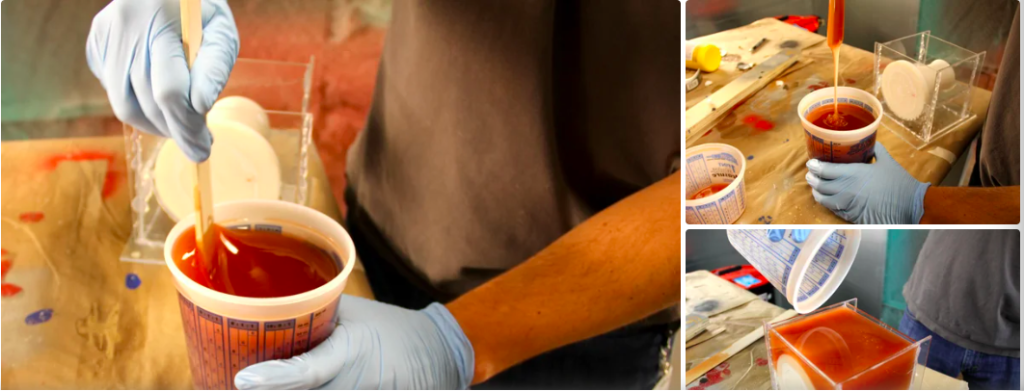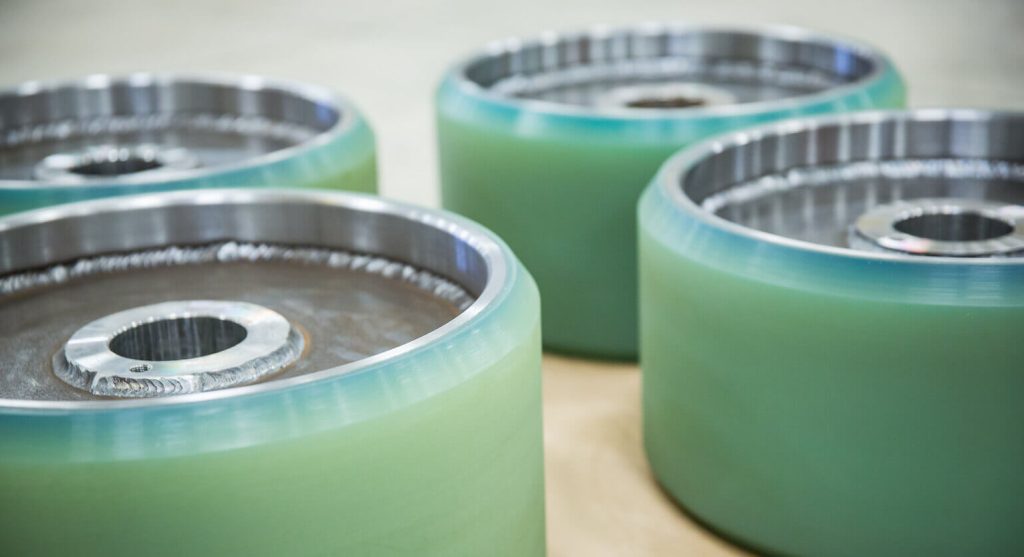Introduction
In the realm of industrial materials, the debate between polyurethane and silicone is a persistent one, especially when it comes to their resistance to chemicals. Both materials boast unique properties that make them suitable for a wide range of applications, from automotive parts to medical devices. However, when it comes to chemical resistance, the choice between polyurethane and silicone isn’t always clear-cut. This comprehensive guide aims to dissect and compare the chemical resistance of these two popular materials. By delving into their composition, real-world applications, and reactions to various chemical environments, we will unravel which material stands superior in the face of chemical adversity. Whether you’re an engineer, a DIY enthusiast, or simply curious about material sciences, this exploration will equip you with the knowledge to make informed decisions for your specific needs. So, let’s dive into the world of polyurethane and silicone and uncover the secrets of their chemical resilience.
Section 1: Understanding Polyurethane
Subsection 1.1: Composition and Properties of Polyurethane
Polyurethane, a versatile polymer, is renowned for its flexibility and durability. It is a synthetic resin created through the polymerization of a polyol and diisocyanate, two types of organic units. This chemical process results in a material that can be engineered to exhibit a range of physical properties, from rigid and tough to soft and elastic. Commonly found in everything from foam insulation and mattresses to automotive parts and footwear, polyurethane’s widespread use is a testament to its adaptability and resilience. Its ability to form strong yet lightweight components makes it a favorite in various industries, including construction, automotive, and consumer goods.
Subsection 1.2: Chemical Resistance of Polyurethane
When it comes to chemical resistance, polyurethane exhibits a commendable performance against a variety of substances. Its resistance to oils, solvents, fats, greases, and petroleum products makes it an ideal choice for applications where such exposures are common. However, polyurethane’s resistance can vary depending on its formulation. For instance, polyester-based polyurethanes generally offer better resistance to oil and solvents, whereas polyether-based polyurethanes are more resistant to hydrolysis and microbial attack. It’s important to note that polyurethanes are not universally resistant to all chemicals. Strong acids and bases, for instance, can degrade polyurethanes, and prolonged exposure to water can lead to hydrolysis, especially in polyester-based variants.
Subsection 1.3: Advantages and Limitations
Polyurethane’s advantages are numerous. Its versatility allows it to be used in a myriad of applications, from soft, flexible foam padding to hard, durable industrial parts. Its excellent abrasion and tear resistance make it suitable for high-wear applications, while its cushioning properties are ideal for comfort-based uses. However, polyurethane is not without its limitations. Its susceptibility to UV light can lead to degradation over time, necessitating the addition of UV stabilizers in outdoor applications. Temperature extremes can also affect its performance, with high temperatures potentially causing softening and low temperatures leading to increased brittleness. Understanding these advantages and limitations is crucial for selecting the right type of polyurethane for a specific application.
This section provides a detailed overview of polyurethane, discussing its composition, chemical resistance, and the balance between its advantages and limitations. This information sets the stage for a comprehensive comparison with silicone in the subsequent sections of your article.

Section 2: Understanding Silicone
Subsection 2.1: Composition and Properties of Silicone
Silicone, distinct from its plastic counterparts, is a polymer primarily composed of silicon, oxygen, carbon, and hydrogen. This unique composition imparts silicone with a set of remarkable properties that make it highly sought after in various industries. Unlike many other polymers, silicone maintains its flexibility and resilience over a wide temperature range, making it an excellent choice for applications subjected to extreme temperatures. It’s also known for its low toxicity and inertness, which is why it’s commonly used in medical devices, cookware, and skincare products. Silicone’s versatility allows it to be formulated into various forms, including fluids, gels, and rubber-like solids, each serving distinct purposes across different sectors.
Subsection 2.2: Chemical Resistance of Silicone
One of the standout characteristics of silicone is its exceptional chemical resistance. It remains stable and maintains its integrity when exposed to a wide range of chemicals, including water, oxygen, and most common solvents. Silicone is particularly resistant to oxidative environments, which is a significant advantage in applications where exposure to air and UV light is a concern. However, it’s worth noting that silicone can be susceptible to certain chemicals, such as strong acids and bases, ketones, and concentrated sulfuric and nitric acids. These substances can cause the silicone to swell or degrade over time, affecting its performance and longevity.
Subsection 2.3: Advantages and Limitations
Silicone’s advantages are numerous and varied. Its thermal stability, flexibility, and weather resistance make it ideal for outdoor applications, automotive components, and kitchenware. Its hypoallergenic and non-reactive nature also makes it suitable for medical and skincare applications. However, silicone does have its limitations. It generally has lower tensile strength and is not as abrasion-resistant as some other materials, such as polyurethane. Additionally, while silicone can withstand a range of temperatures, it can become less effective at extremely high temperatures, where it may start to lose its structural integrity. Understanding these strengths and weaknesses is crucial for determining the suitability of silicone for specific applications.
In this section, we’ve explored the composition, chemical resistance, and the balance of advantages and limitations of silicone. This sets the stage for a nuanced comparison with polyurethane in the following sections, helping readers understand which material is more suited for their specific needs in terms of chemical resistance.

Section 3: Comparative Analysis
Subsection 3.1: Direct Comparison of Chemical Resistance
When directly comparing the chemical resistance of polyurethane and silicone, several key factors come into play. Polyurethane shows excellent resistance to petroleum-based products, oils, and some solvents, making it suitable for industrial applications where such exposures are common. However, it can be vulnerable to hydrolysis, particularly in polyester-based forms, and may degrade when exposed to strong acids and bases. Silicone, on the other hand, boasts remarkable stability in oxidative environments and maintains its integrity against a broader range of chemicals, including water and UV exposure. Its weakness lies in its reaction to certain solvents, strong acids, and bases, where it can swell or degrade. The choice between these materials should be guided by the specific chemical environment they will be exposed to.
Subsection 3.2: Case Studies and Real-World Applications
To illustrate the practical implications of choosing between polyurethane and silicone, consider a few case studies. In automotive applications, polyurethane is often preferred for its abrasion resistance in car parts that are exposed to oils and mechanical wear. Silicone, with its high temperature resistance and stability, is commonly used in engine gaskets and hoses. In medical devices, silicone’s hypoallergenic properties and stability make it a safer choice, especially in implants or skin-contact applications. These real-world examples highlight the importance of context when selecting materials based on chemical resistance.
Subsection 3.3: Expert Opinions and Industry Standards
Experts in material science often weigh in on the debate between polyurethane and silicone. Generally, the consensus is that the choice depends on the specific requirements of the application. Industry standards also play a crucial role in this decision-making process. For instance, in food-grade applications, silicone is often preferred due to its non-toxic and stable nature. In contrast, for industrial machinery components, polyurethane might be the material of choice for its strength and resistance to wear and tear. Understanding these expert opinions and industry standards can provide valuable guidance in material selection.
This comparative analysis section provides a detailed examination of the chemical resistance of polyurethane and silicone, supported by real-world applications and expert insights. It aims to equip readers with the necessary information to make an informed decision between these two materials for their specific needs.

Section 4: Factors Influencing Chemical Resistance
Subsection 4.1: Environmental Factors
The chemical resistance of both polyurethane and silicone is significantly influenced by environmental factors. Temperature, humidity, and exposure to UV light can alter the way these materials react to chemicals. For instance, high temperatures can cause silicone to become more pliable, potentially affecting its chemical resistance properties. Similarly, polyurethane may become brittle in cold environments, which could impact its resistance to certain chemicals. Additionally, prolonged exposure to UV light can degrade polyurethane more rapidly than silicone. Understanding the environmental conditions in which these materials will be used is crucial for predicting their chemical resistance over time.
Subsection 4.2: Material Quality and Manufacturing
The quality of the material and the manufacturing process also play a pivotal role in determining the chemical resistance of polyurethane and silicone. Variations in the formulation of polyurethane, such as the ratio of polyol to diisocyanate or the type of catalyst used, can result in different levels of chemical resistance. Similarly, the purity of the silicone and the curing process used can affect its resilience to chemicals. High-quality manufacturing processes ensure that the materials maintain their intended properties and perform as expected in various chemical environments. Therefore, selecting materials from reputable manufacturers who adhere to high-quality standards is essential for ensuring optimal chemical resistance.
Subsection 4.3: Age and Wear of Material
Over time, both polyurethane and silicone can undergo changes that affect their chemical resistance. As these materials age, they may experience wear, micro-tears, or structural changes due to environmental exposure, which can diminish their ability to resist chemicals effectively. Regular maintenance and timely replacement are important for preserving the chemical resistance properties of these materials. It’s also worth noting that newer formulations and advancements in material science may offer improved resistance and durability compared to older versions.
In this section, we’ve explored the various factors that influence the chemical resistance of polyurethane and silicone, including environmental conditions, material quality, manufacturing processes, and the age and wear of the material. Understanding these factors is key to selecting the right material for specific applications and ensuring its long-term effectiveness in resisting chemical exposures.
Section 5: User Considerations
Subsection 5.1: Choosing the Right Material for Your Needs
When deciding between polyurethane and silicone, it’s essential to consider the specific requirements of your application. For environments involving regular contact with oils, solvents, or mechanical wear, polyurethane might be the more suitable choice due to its robustness in such conditions. On the other hand, if the application involves prolonged exposure to high temperatures or requires a material that is non-reactive and safe for medical or food-grade use, silicone would be the preferable option. Users should also consider factors such as the ease of installation, the need for flexibility or rigidity, and the expected lifespan of the material in the given environment.
Subsection 5.2: Maintenance and Care
Maintaining the chemical resistance of polyurethane and silicone involves regular inspection and proper care. For polyurethane, this might include checking for signs of wear or degradation, especially in outdoor or mechanically strenuous environments. Silicone, while generally requiring less maintenance, should still be inspected for any signs of swelling or degradation, particularly in applications involving exposure to harsh chemicals. Cleaning procedures should also be appropriate for the material type to avoid inadvertently damaging the material or reducing its chemical resistance.
Subsection 5.3: Cost Considerations
Budget can also be a deciding factor in choosing between polyurethane and silicone. Generally, silicone tends to be more expensive than polyurethane, but it also offers unique properties that might justify the higher cost in certain applications. Users should evaluate the cost-effectiveness of each material based on the application’s requirements and the expected lifespan of the material. In some cases, investing more initially in a higher-quality material like silicone could result in long-term savings due to its durability and lower maintenance needs.
In this section, we’ve addressed the key considerations users should keep in mind when choosing between polyurethane and silicone. These include assessing the specific needs of the application, understanding the maintenance requirements of each material, and considering the cost implications. By carefully evaluating these factors, users can make an informed decision that ensures the effectiveness and longevity of the chosen material in their specific application.

Section 6: Future Trends and Innovations
Subsection 6.1: Emerging Technologies in Material Science
The landscape of material science is continually evolving, with new technologies promising to enhance the properties of both polyurethane and silicone. Innovations in polymer chemistry are leading to the development of more resilient and adaptable forms of these materials. For instance, advancements in polyurethane technology are focusing on improving its environmental resistance and reducing its susceptibility to hydrolysis and UV degradation. In the realm of silicone, researchers are experimenting with new formulations to increase its tensile strength and expand its applicability in high-stress environments. These advancements not only aim to bolster the inherent qualities of these materials but also to make them more sustainable and eco-friendly.
Subsection 6.2: Predictions for Future Applications
As these materials evolve, so too do their potential applications. In the future, we may see polyurethane and silicone being used in more advanced and demanding roles. For polyurethane, this could include its increased use in biodegradable products and medical devices, capitalizing on its versatility and adaptability. Silicone, with its biocompatibility and stability, might find new applications in advanced medical implants or as a key material in emerging technologies like flexible electronics and soft robotics. The ongoing research and development in these materials are set to open new frontiers in various industries, from healthcare to consumer electronics.
Subsection 6.3: The Role of Sustainability
An important trend in the development of both polyurethane and silicone is the growing emphasis on sustainability. The future of these materials will likely see a stronger focus on eco-friendly manufacturing processes, recyclability, and the reduction of environmental impact. Innovations might include the development of bio-based polyurethanes or silicone recycling methods that reduce waste and energy consumption. As the world moves towards more sustainable practices, the materials science industry is expected to adapt, ensuring that polyurethane and silicone continue to be relevant and responsible choices for the future.
In this section, we’ve explored the exciting future trends and innovations in the world of polyurethane and silicone. From advancements in material properties and applications to the increasing importance of sustainability, these developments are set to shape the way these materials are used and perceived in the years to come. Keeping an eye on these trends will be crucial for industries that rely on these materials, as well as for consumers who value both performance and environmental responsibility.
Conclusion
In our comprehensive exploration of polyurethane and silicone, we’ve delved into the intricacies of each material’s composition, properties, and chemical resistance. Polyurethane stands out for its robustness in environments with oils, solvents, and mechanical wear, making it a preferred choice in industrial and automotive applications. Silicone, with its exceptional stability in oxidative environments and high-temperature resilience, is ideal for medical devices, kitchenware, and outdoor applications.
The decision between polyurethane and silicone hinges on the specific chemical exposures and environmental conditions they will face. Polyurethane is generally more suitable for applications where abrasion resistance is key, while silicone is the go-to material for applications requiring high thermal stability and biocompatibility.
As we look towards the future, both materials are poised for exciting advancements. Innovations in polymer chemistry are enhancing their properties and expanding their applications, all while moving towards greater sustainability.
When selecting between polyurethane and silicone, consider the specific requirements of your application, the environmental conditions, and the long-term implications of your choice. Both materials offer unique advantages, and the right choice depends on a careful evaluation of your specific needs.
We encourage you to engage with this topic further and share your thoughts and experiences. Which material have you found more effective in your projects? Are there particular applications where you prefer one over the other? Your insights can greatly benefit others facing similar material choices.
References and Further Reading
Polyurethane Composition and Uses
Silicone Material Properties
Chemical Resistance of Polymers
Advancements in Material Science
Sustainability in Polymer Production
This list of references provides a starting point for further exploration into the fascinating world of polyurethane and silicone. By staying informed and engaged, we can make more educated decisions in our material selections, leading to better outcomes in our projects and innovations.


